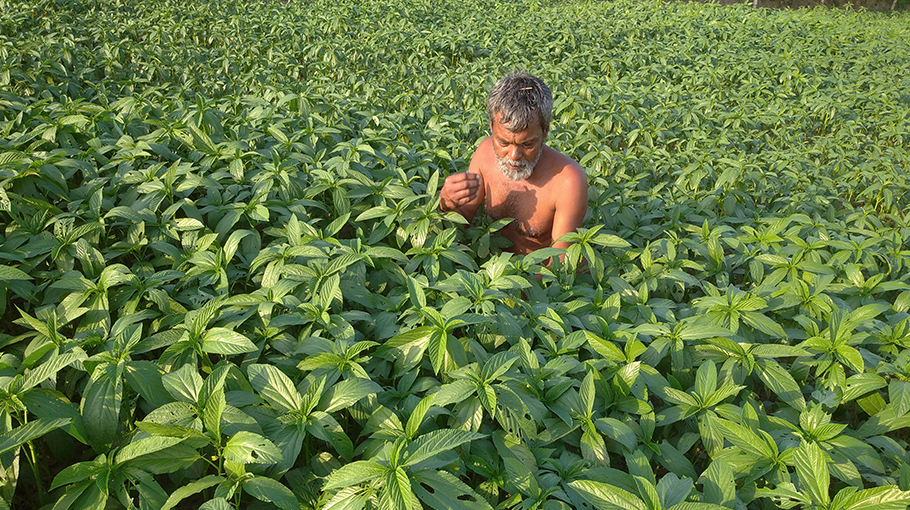Bumper jute production in Jashore region

The farmers in Jashore region are going to produce 2058,416 bales of jute fibre on a total of 170,124 hectares of land in the current Kharip-1 season. Some of them have been leaning towards Aus and maize reducing their jute farming area in the season.
Severe and prolonged drought was also liable for reducing the jute farming area when they could not minimize the production cost of jute this season. Further, allocation of incentives for least cost Aush farming has been encouraging the farmers to lean towards the paddy farming, said the farmers.
In the other-hand the officials of the department of agriculture extension (DAE) in Jashore have been saying they were encouraging the farmers to continue jute farming to meet up local demand and global demand of the once “Golden Fibre”.
Farmer Rafiudin of village Jalalpur in bordering Moheshpur Upazila of Jhenaidah and Ananda Das of village Churamankathi in Jashore Kotwalli police station when contacted at their jute plot on Monday said he had reduced his jute farming land to two bighas as against previous season’s three bighas.
They were compelled to reduce the jute farming area when jute farming became losing concern due to increase cost for seeds, fertilizers, pesticides, day labourers and huge irrigation water demand in a season. Further, prolonged drought has also discouraged the farmers like him to continue jute farming in the kharip-1 season.
The farmers said they have to spend about Taka 20 thousand for seeds, fertilizers, pesticides, day labourer and huge irrigation cost. Day labourer and irrigation charge is a panful matter for the farmers. But they hardly receive Taka 22 thousand from about12 maunds of jute fibre and another Taka two from the jut- sticks. For the survival of the farmers themselves they were compelled to reduce the jute farming area and leaning towards cost effective Aush and some of the portion of land for maize farming. Aus farming requires least irrigation water from the ground, while the government was encouraging them providing incentives for the same variety of paddy.
In the other-hand the officials of the department of agriculture extension (DAE) in Jashore have been saying they were encouraging the farmers to continue jute farming to meet up local demand and global demand of the once “Golden Fibre”.
According to a source related to the office of the additional director of the DAE in Jashore region said they had fixed target to produce 2058,416 bales of jute on 170,124 hectares of land in Jashsore, Jhenaidah, Magura, Kushtia, Chuadanga and Meherpur in the season. The farmer of the region had already brought 123,930 hectares of land till May 7. They are expecting some more land under the jute farming as they sowing will continue till last day of May in the kharip 1 season.
The farmers in six Jashore region had produced 2435,176 bales of jute fibre on a total of 169,382 hectares of land. Yield on each hectare was 14.376 bales, the DAE sources said.
Additional director (AD) of the DAE in Jashore regional office Abu Hossain when contacted admitted that the land under jute farming in the season might be reduced when the farmers were leaning towards Aus and maize farming.
He said as the government has been providing incentives in in least irrigation water consuming Aus paddy, farmers in Kushtia had already expanded at least 5,000 hectares of land under Aus farming in the season for their financial benefit. A good number of farmers also migrated to maize during the season to minimize production cost.
The DAE is not discouraging the farmers in jute farming as it has a potential in the country as well as in the globe where the farmers have ben playing role in jute farming. Incentive research on jute had opened a new era in the crop, DAE additional director said.




